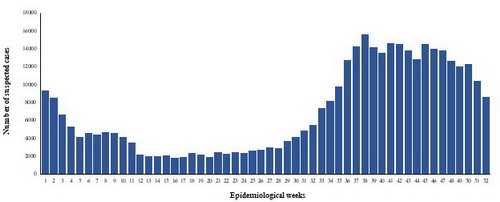20 January 2019 – Throughout 2018, WHO's Eastern Mediterranean Region witnessed a number of new infectious diseases outbreaks and cases of other diseases were reported sporadically throughout the year in endemic patterns. The sporadic reporting of these infectious diseases continued as the transmission, which began in the previous years, was not fully contained. Diseases having outbreak potential that were reported in 2018 from countries of the Region, either in epidemic proportion or in sporadic patterns, include: 1) chickenpox (varicella); 2) chikungunya; 3) cholera; 4) Crimean-Congo haemorrhagic fever (CCHF); 5) dengue fever; 6) diphtheria; 7) extensively drug-resistant typhoid fever; 8) Middle East respiratory syndrome; 9) Travel-associated Legionnaire’s Disease; and 10) West Nile fever. A total of 12 countries reported these infections resulting in a cumulative total of 844 deaths and 4 356 25 illnesses (Fig 1).
The Regional Office continued to provide technical support to the affected countries to contain the outbreaks and prevent geographic spread through application of appropriate public health interventions using a science-based control measure. The likelihood of the emergence and rapid transmission of high-threat pathogen diseases has increased in recent times, as there are many countries affected directly or indirectly by acute and protracted humanitarian emergencies, which have led to a frail health system and unusually high number of internally displaced persons (IDPs) and refugees living in overcrowded, overburdened spaces, with little or no access to basic health care services and environmental infrastructure. The other risk factors contributing to the emergence and rapid spread of epidemic diseases in the Region include rapid or unplanned urbanization, climate change, weak surveillance and limited laboratory diagnostic capacity, and increased human–animal interaction.
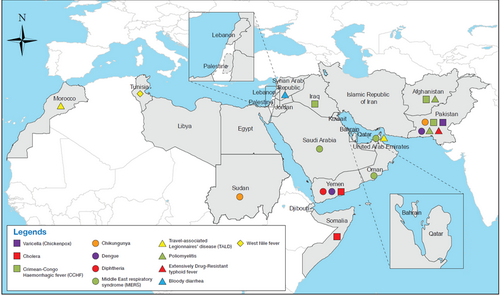
Fig. 1. Countries of the Region reporting infectious disease outbreaks in 2018
1. Chickenpox (varicella)
Pakistan
Since April 2017, Pakistan has faced a significant upsurge of reported chickenpox (varicella) cases and until December 2018, a total of 17 612 cases with 21 related deaths (case–fatality rate 0.11%) was reported. Between January and December 2018, a total of 3512 cases of chickenpox, with no associated death was reported in Punjab province during 2018 (Fig. 2). The outbreak has not yet been fully contained. A high number of cases were reported during the summer months but sporadic cases continued to be reported until the end of the year.
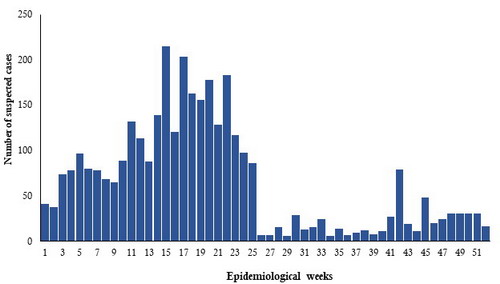
Fig. 2. Number of suspected chickenpox cases reported from Punjab province, Pakistan, 2018
2. Chikungunya
Pakistan
Since December 2016 until March 2018 Pakistan reported chikungunya case from different areas. The first case was laboratory-confirmed during the second week of December 2016 in Balochistan province and since then until the end of March 2018, a total of 8521 suspected cases of chikungunya were reported from several areas of the country. The most affected provinces were Sindh and Balochistan, which reported 64.5% and 33.6% of the total cases, respectively. In 2018, chikungunya cases were reported from Balochistan and Sindh (Karachi) provinces only (Table 1). It has been reported that frequent population movement was responsible for spread of the disease to other parts of the country. This is the first outbreak of chikungunya ever reported in the country.
Table 1. Suspected chikungunya cases reported from December 2016 to March 2018, Pakistan
| Province/area | Cumulative cases |
| Karachi | 4714 |
| Balochistan | 2866 |
| Tharparkar (Sindh) | 785 |
| Khybe Pakhtounkhwa | 136 |
| Azad Kashmir | 1 |
| Punjab | 18 |
| Federally administered tribal areas | 1 |
| Islamabad capital territory (ICT) | 0 |
| Gilgit Baltistan | 0 |
Sudan
In 2018, Sudan reported its first ever outbreak of chikungunya. The outbreak began in July 2018 and by the second week of November, a total of 20 110 cases, with no associated deaths, was reported. The samples were laboratory-confirmed both by rt-PCR and serology. The current outbreak of chikungunya was concentrated in the Kassala state. The outbreak subsequently spread to other states, including Red Sea, Gadarif, Al Gezeera, West Darfur, Sennar, and River Nile, presumably owing to population movement (Fig. 3).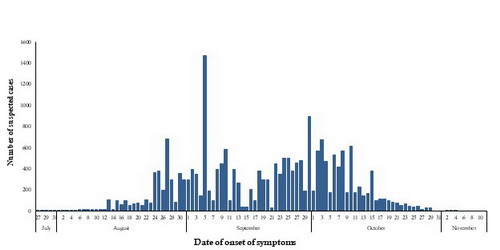
Fig. 3. Number of suspected chikungunya cases reported from Sudan in 2018
3. Cholera
Somalia
Cholera is an endemic disease in Somalia. Since December 2017 when cholera cases were laboratory-confirmed in the Beletweyne district of the Hiraan region following heavy rain, the outbreak spread to 22 districts in 5 regions located in the river basins in Jubba and Shabelle. Until the end of June, the number of suspected cases continued to increase. The cases showed a downward trend since the beginning of week no 27 and cases were mainly localized in Banadir region throughout the year. By December 2018, a total of 6761 suspected cases of cholera, including 46 deaths (case–fatality rate 0.68%), were reported. Of 356 stool samples that were tested at the National Public Health Laboratory in Mogadishu during 2018, a total of 105 samples tested positive for Vibrio cholerae, serotype O1 Ogawa. (Fig. 4). The outbreak has not yet levelled off fully and sporadic cases continue to occur in the hotspots.
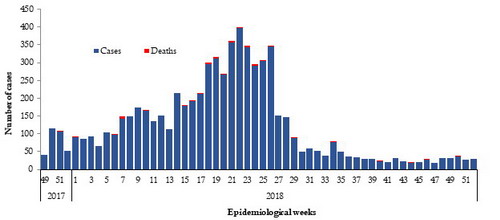
Fig. 4. Suspected cholera cases and deaths reported in Somalia, December 2017–December 2018
Yemen
The cholera outbreak reported in Yemen, since October 2016 continued in 2018 as well. This ongoing outbreak has affected the whole country, and although the trend was on the decline at the beginning of the year, cases continued to spike towards the end of the year. The cumulative number of suspected cholera cases reported from January to December in 2018 was 369 133, with 504 associated deaths (case–fatality rate 0.13%). In 2018 a total of 10 664 stool samples were tested of which 3371 were confirmed as Vibrio cholerae, serotype O1 Ogawa (Fig. 5).
Fig. 5. Epidemic curve of suspected cholera cases reported in Yemen, 2018
4. Crimean-Congo haemorrhagic fever (CCHF)
Afghanistan
CCHF is endemic in Afghanistan, and an upsurge of reported cases was reported in 2017 and cases continued to be reported in high numbers throughout 2018 and peaked during the month of August. From January to December 2018, a total of 483 suspected cases, including 59 associated deaths (case–fatality rate 12.21%) were reported in Afghanistan from CCHF. The majority of the cases were reported from Herat and Kabul provinces. (Fig. 6) The cause of this upsurge seen in recent months remain unknown.
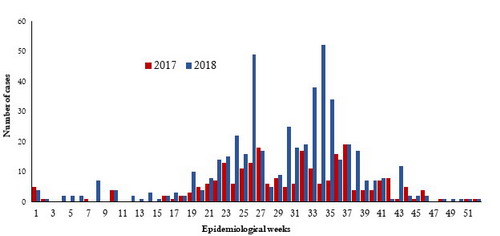
Fig. 6. Suspected cases of CCHF reported during 2017 and 2018, Afghanistan
Pakistan
CCHF also remains an endemic disease in Pakistan. During the last few years, the country has encountered a number of outbreaks. Initially, the CCHF cases were reported from its established foci such as Balochistan and but now it is reported from other provinces/areas as well. The frequent unmonitored movement of animals and animal products remained the major cause of the spread of the virus throughout the country. From February to October 2018, a total of 63 suspected cases with 11 associated deaths (case–fatality rate 17.46%) were reported throughout the country (Fig. 7).
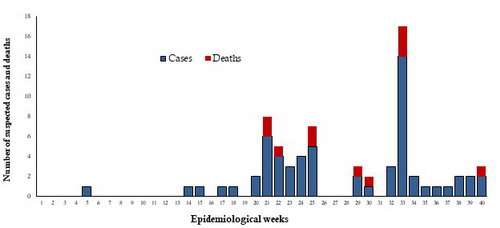
Fig. 7. Suspected cases and deaths from CCHF in Pakistan, 2018
5. Dengue fever
Oman
The country reported its first imported dengue fever cases in 2001. Since 2001, the number of travel-associated dengue fever cases were reported in the country on a regular basis. During 2018, the country reported 30 dengue fever cases, most of them were in travellers returning from dengue-endemic countries. On 15 December 2018, the IHR national focal point for Oman notified WHO of 3 confirmed, locally acquired/indigenous dengue fever cases (with no travel history to dengue endemic or dengue fever-reporting countries), in Al-Seeb district, Muscat governorate. The circulating dengue serotype is DEN-2, as per the characterization of the human samples done at the Central Public Health Laboratory in the country (Fig. 8).
The main vector of dengue virus transmission, Aedes aegypti, is well established in south of Oman but no local transmission of dengue fever was previously reported from the country.
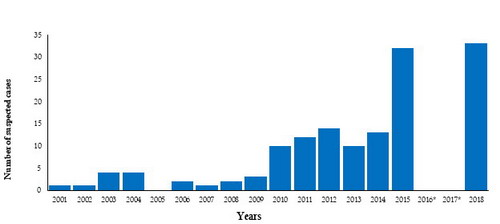
Fig. 8. Dengue fever cases reported in Oman, 2001–2018
* Data are not available for 2016 and 2017.
Yemen
Dengue fever cases were reported in Yemen during the month of January in Shabwah governorate. The reported cases gradually increased and peaked during epidemiological week 37. By December 2018, a total of 27 902 suspected cases, including 46 deaths (case–fatality rate 0.16%), were reported across the country. In total 2307 cases were IgM positive by Elisa at the National Center for Public Health Laboratories and 1208 cases were IgG positive (Fig. 9). Owing to the presence of Aedes mosquitoes in the country and slow vector control operations mostly attributed to security situations in the country, cases are expected to continue in the coming months too.
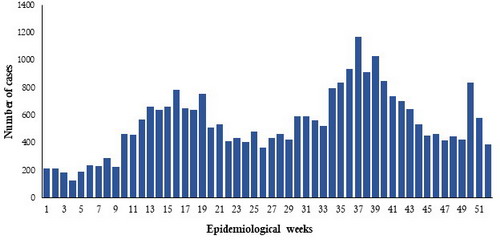
Fig. 9. Suspected cases of dengue fever reported in Yemen, 2018
6. Diphtheria
Yemen
Since October 2017, Yemen has experienced an outbreak of diphtheria that has spread to 222 districts in 20 governorates. By December 2018, a cumulative total of 3128 probable cases were reported with 178 related deaths (case–fatality rate 5.69%), including 162 laboratory-confirmed cases of diphtheria. The most affected age group is 5–14 years, which accounts for 48% of all reported cases. The majority of the cases reported were from Ibb governorate (Fig. 10).
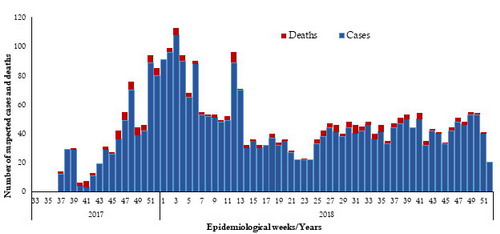
Fig. 10. Cases and deaths reported from diphtheria in Yemen, 2017 and 2018
7. Extensively drug-resistant typhoid fever
Pakistan
Since November 2016, there has been an increase in the number of cases of extensively drug-resistant (XDR) typhoid fever in Pakistan. Cases were first detected in a district called Hyderabad of Sindh province. Afterwards, cases continued to be reported from other districts. However, most of the reported cases (69%) are from Karachi district of Sindh province (Fig. 11). Until December 2018 a total of 5418 cases of XDR typhoid fever were reported from different districts of Sindh province (Table 2) of which 4677 cases were reported from January to December 2018.
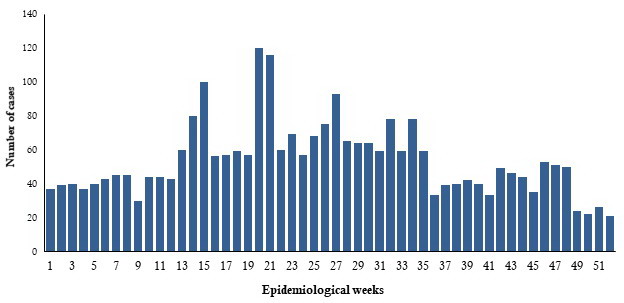
Fig. 11. Extensively drug-resistant typhoid fever cases reported in Karachi, Pakistan, 2018
Table 2. Extensively drug-resistant typhoid fever cases reported from December 2016 to December 2018, Pakistan
| Year | Karachi | Hyderabad | Other districts | Total |
| 2016 | 0 | 11 | 0 | 11 |
| 2017 | 175 | 488 | 67 | 730 |
| 2018 | 3564 | 956 | 157 | 4677 |
| Grand total | 3739 | 1455 | 224 | 5418 |
8. Middle East respiratory syndrome (MERS)
Oman, Saudi Arabia and United Arab Emirates
MERS cases continued to be reported sporadically throughout 2018 especially in Saudi Arabia. In 2018, a total of 147 laboratory-confirmed cases of MERS were reported compared to 250, 249, 492 reported during 2017, 2016 and 2015 respectively. Of these total cases reported in 2018, Saudi Arabia reported 145 cases. Other countries reporting laboratory-confirmed cases of MERS in 2018 include Oman and United Arab Emirates (one case each, see Table 4, Fig. 12) and globally, Republic of Korea and United Kingdom reported one case each which were travel-associated having an epidemiological link to the countries of the Eastern Mediterranean Region.
In 2018, a total of 5 nosocomial clusters of MERS were reported from Saudi Arabia (Table 3 and Fig. 12, 13, 14). Of these clusters, 2 were reported in hospital while 3 were household clusters.
Table 3. MERS Hospital outbreaks reported during 2018
| Outbreak | Date of first reported case | Date of last reported case | Total cases | Died | CFR (%) | HCW | Asymptomatic |
| Hospital I outbreak, Hafr Albatin | 23 January 2018 | 2 March 2018 | 4 | 1 | 25 | 3 | 3 |
| Hospital 2 outbreak, Riyadh | 23 February 2018 | 3 March 2018 | 6 | 3 | 50 | 0 | 0 |
| Household 1, Jeddah | 1 March 2018 | 22 March 2018 | 3 | 0 | - | 0 | 0 |
| Household 2, Najran | 17 May 2018 | 29 May 2018 | 12 | 0 | - | 1 | 0 |
| Household 3, Riyadh | 2 July 2018 | 12 July 2018 | 2 | 1 | 50 | 0 | 0 |
| Total | 27 | 5 | 18.51 | 4 | 3 |
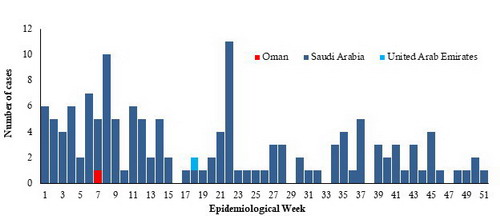
Fig. 12. MERS cases reported from the Region by week of illness onset, 2018
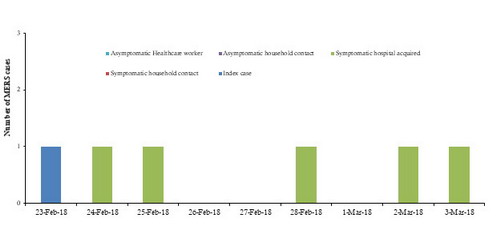
Fig. 13. MERS hospital 2 outbreak, Riyadh, February 2018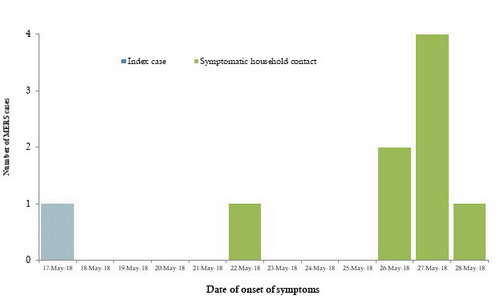
Fig. 14. MERS Household 2, Najran outbreak, Riyadh, May 2018
MERS cluster (hospital and household) reported from Saudi Arabia in 2018
In 2018, 5 nosocomial cluster of MERS were reported in Saudi Arabia resulting in 27 cases including 5 deaths (case–fatality rate 18.51%). Out of these cases, 3 were asymptomatic while 4 were health care workers.
9. West Nile fever
Tunisia
West Nile fever is endemic in Tunisia, and sporadic cases were reported from the beginning of 2018. However, a significant upsurge of cases was reported in September 2018, peaking in the first week of October 2018. By end of November 2018, a total of 377 suspected cases of West Nile fever and 2 associated deaths were reported. These cases were reported from eastern Tunisia, such as Sousee, Monastir, Mahdia, and Sfax (Fig. 15).
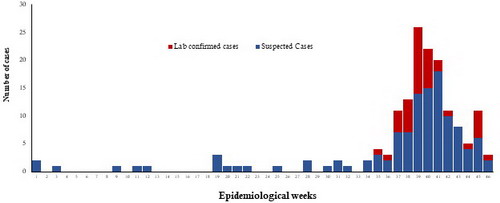
Fig. 15. West Nile fever cases reported in Tunisia, 2018
Table 4. Infectious disease outbreaks reported from the countries of the Region in 2018
| Disease | Country | First reported case | Last reported case | Total cases | Deaths | CFR (%) |
| Chickenpox (varicella) | Pakistan | January 2018 | December 2018 | 3512 | 0 | - |
| Chikungunya |
Pakistan Sudan |
January 2018 July 2018 |
March 2018 November 2018 |
97 20 110 |
0 0 |
- - |
| Cholera |
Somalia Yemen |
January 2018 January 2018 |
December 2018 December 2018 |
6448 369 133 |
45 504 |
0.69 0.13 |
| Crimean-Congo haemorrhagic fever |
Afghanistan Pakistan |
January 2018 February 2018 |
December 2018 October 2018 |
483 63 |
59 11 |
12.21 15.97 |
| Dengue |
Oman Yemen |
January 2018 January 2018 |
December 2018 December 2018 |
33 27 902 |
0 46 |
- 0.16 |
| Diptheria | Yemen | January 2018 | December 2018 | 2669 | 136 | 5.09 |
| Extensively drug-resistant typhoid fever | Pakistan | January 2018 | December 2018 | 4677 | 0 | - |
| Middle East respiratory syndrome (MERS) |
Oman Saudi Arabia United Arab Emirates |
4 March 2018 3 January 2018 16 May 2018 |
4 March 2018 26 December 2018 16 May 2018 |
1 145 1 |
0 41 0 |
28.27 |
| Travel-associated Legionnaire's disease |
Jordan Kuwait Morocco United Arab Emirates (Dubai) |
27 March 2018 8 September 2018 28 April 2018 20 February 2018 |
8 April 2018 8 September 2018 28 April 2018 17 March 2018 |
3 1 1 2 |
0 0 0 0 |
- - - - |
| West Nile fever | Tunisia | January 2018 | November 2018 | 377 | 2 | 0.53 |








